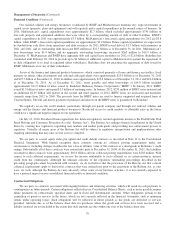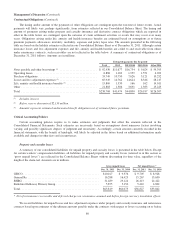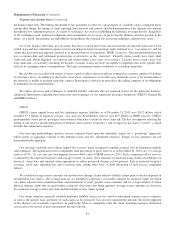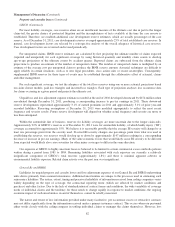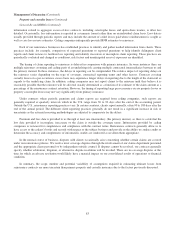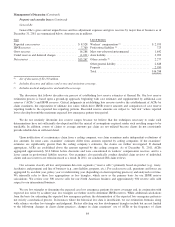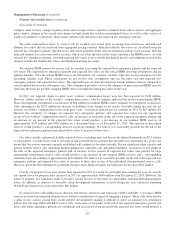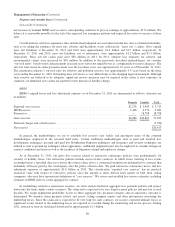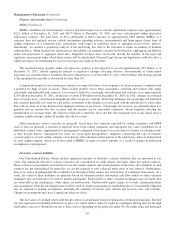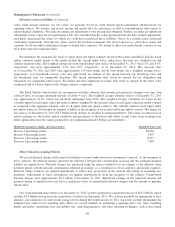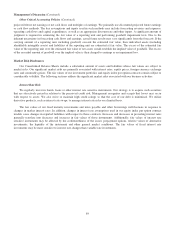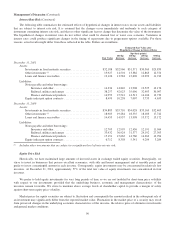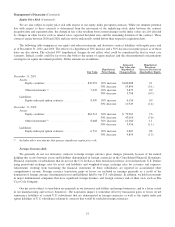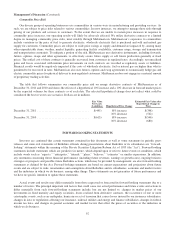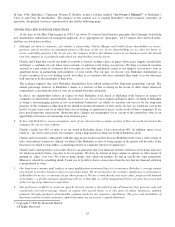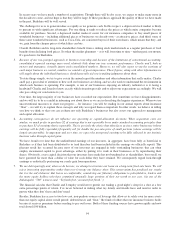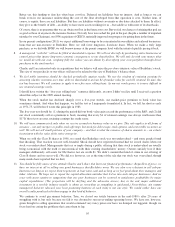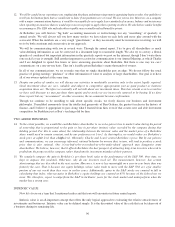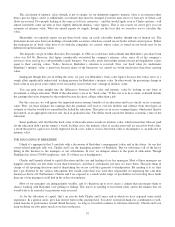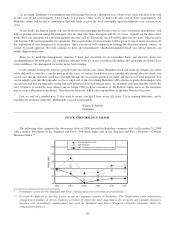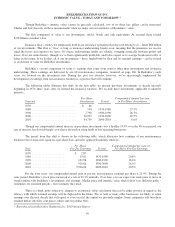Berkshire Hathaway 2011 Annual Report Download - page 91
Download and view the complete annual report
Please find page 91 of the 2011 Berkshire Hathaway annual report below. You can navigate through the pages in the report by either clicking on the pages listed below, or by using the keyword search tool below to find specific information within the annual report.Management’s Discussion (Continued)
Other Critical Accounting Policies (Continued)
projected future net earnings or net cash flows and multiples of earnings. We primarily use discounted projected future earnings
or cash flow methods. The key assumptions and inputs used in such methods may include forecasting revenues and expenses,
operating cash flows and capital expenditures, as well as an appropriate discount rate and other inputs. A significant amount of
judgment is required in estimating the fair value of a reporting unit and performing goodwill impairment tests. Due to the
inherent uncertainty in forecasting cash flows and earnings, actual future results may vary significantly from the forecasts. If the
carrying amount of a reporting unit, including goodwill, exceeds the estimated fair value, then individual assets (including
identifiable intangible assets) and liabilities of the reporting unit are estimated at fair value. The excess of the estimated fair
value of the reporting unit over the estimated fair value of net assets would establish the implied value of goodwill. The excess
of the recorded amount of goodwill over the implied value is then charged to earnings as an impairment loss.
Market Risk Disclosures
Our Consolidated Balance Sheets include a substantial amount of assets and liabilities whose fair values are subject to
market risks. Our significant market risks are primarily associated with interest rates, equity prices, foreign currency exchange
rates and commodity prices. The fair values of our investment portfolios and equity index put option contracts remain subject to
considerable volatility. The following sections address the significant market risks associated with our business activities.
Interest Rate Risk
We regularly invest in bonds, loans or other interest rate sensitive instruments. Our strategy is to acquire such securities
that are attractively priced in relation to the perceived credit risk. Management recognizes and accepts that losses may occur
with respect to assets. We also strive to maintain high credit ratings so that the cost of our debt is minimized. We utilize
derivative products, such as interest rate swaps, to manage interest rate risks on a limited basis.
The fair values of our fixed maturity investments and notes payable and other borrowings will fluctuate in response to
changes in market interest rates. In addition, changes in interest rate assumptions used in our equity index put option contract
models cause changes in reported liabilities with respect to those contracts. Increases and decreases in prevailing interest rates
generally translate into decreases and increases in fair values of those instruments. Additionally, fair values of interest rate
sensitive instruments may be affected by the creditworthiness of the issuer, prepayment options, relative values of alternative
investments, the liquidity of the instrument and other general market conditions. The fair values of fixed interest rate
investments may be more sensitive to interest rate changes than variable rate investments.
89


